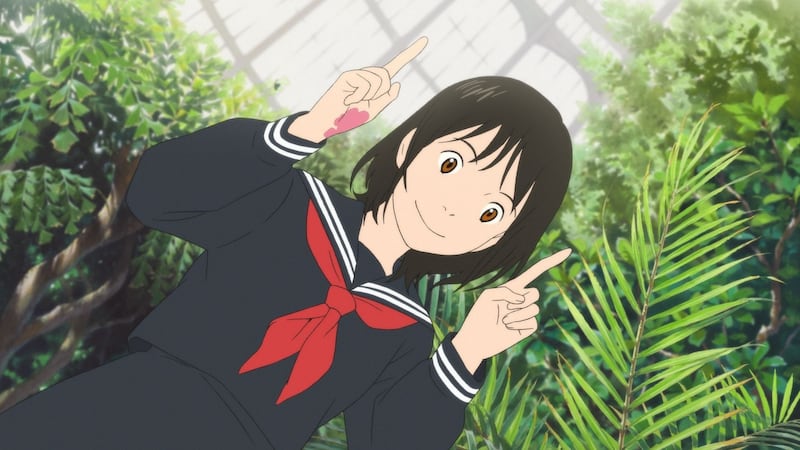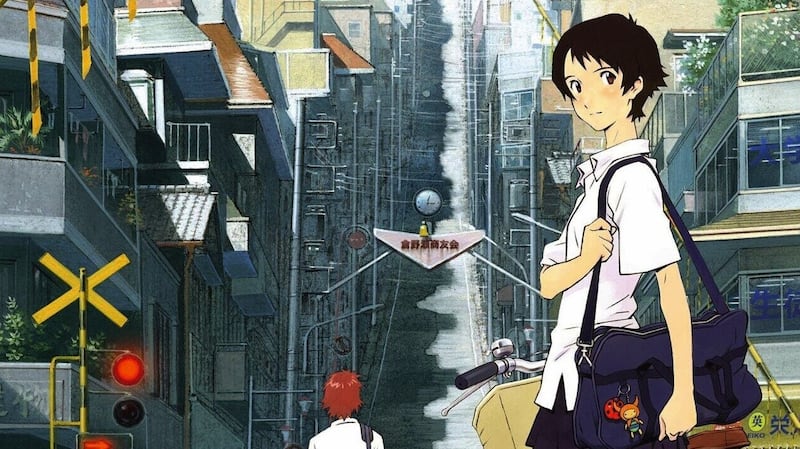There was no shortage of irony when, upon the 2006 release of The Girl Who Leapt Through Times, critics hailed filmmaker Mamoru Hosoda as the new Hayao Miyazaki. Studio Ghibli, the production company co-founded by Miyazaki some 33 years ago, had had the same idea. When Digimon: The Movie, which Hosoda co-directed with Shigeyasu Yamauchi, became an international hit in 2000, Ghibli producer Toshio Suzuki tapped Hosoda to direct an adaptation of Diana Wynne Jones's YA novel, Howl's Moving Castle.
Trouble was Ghibli wanted Hosoda to make the film precisely as Miyazaki would or, more accurately, as Miyazaki did: Hosoda ultimately left the project and Miyazaki helmed the film, released in 2004. Not many animators would have opted to walk away from Ghibli in the same circumstances, particularly one who was inspired to take up the profession after studying the sketches for The Castle of Cagliostro, Miyazaki's first film as director, and who had initially applied for a job at Ghibli upon graduating from Kanazawa College of Art.
Hosoda didn't get the job but he did get a rejection letter written by Miyazaki. In 1991 Hosoda joined Toei Animation and began his career as an illustrator and animator. By 2005, he was working on episodes of Sailor Moon, Dragon Ball Z, and Crying Freeman as part of that studio's production department.
“I always wanted to become a filmmaker,” says Hosoda, who, on leaving primary school at age 12, wrote that his life’s ambition was to “become an anime director”.
“After I graduated from art college I spent six years as an animator and it was an invaluable experience,” he recalls. “Everybody does everything in animation. It’s very collaborative. But I think the relationship between a director and the animators is really, really important. It’s not always easy to find good animators, who are not just good animators, but people who you get on with. It helps when you have experience of both sides.”
Studio Chizu
Hosoda has subsequently gone on to found his own animation house, Studio Chizu, where he has created many of the best-loved and biggest grossing anime of recent years, including Summer Wars, Wolf Children, and The Boy and the Beast. The latter took more than 5.85 billion yen at the Japanese box office.
"It's a bit like buying a property when you were renting before," says the perennially smiling Hosoda of the studio he founded alongside The Girl Who Leapt Through Time producer, Yuichiro Saito. "But the work hasn't changed. I'm still focused on making films. It's just my workplace. That's a boring answer but it's true."
Mirai is Hosoda's fifth feature as an independent director. Unusually, the film's protagonist is Kun, a train-obsessed toddler who must learn to share his parents with Mirai, his newly arrived younger sister. Helpfully, Mirai from the future appears to teach her brother to stop hitting her with a toy train while his frantic, sleep-deprived parents are otherwise occupied. A poignant and strange inversion of It's a Wonderful Life, Mirai introduces Kun to various family members at different stages of life, including his mother as a child, his great-grandfather who teaches Kun how to ride a bike, and the family dog reimagined as a dishevelled human prince.

“The film is based on my children,” says Hosoda, who wrote the script having observed the dark look on his own son’s face upon seeing his younger sibling for the first time. “My older one is five years old now but he was three when I was making the film. When we were busy with the new baby, he had a tantrum and said she had stolen our love. It was a way of recording what was happening in their lives. But it’s also drawn from many of my own experiences of life at that age or as much as I could remember about being that age. When you become a parent, you sort of feel like you’re reliving your own childhood. Well, I do. So you’re reconnected with that time.”
Family home
The time-travelling plot transpires almost entirely in Kun's own house. Hosoda drafted in architect Makoto Tanijiri to design the building according to the view and needs of a four year old. It's not the AI expanse of Summer Wars or the multidimensional fantasy of The Boy and the Beast, but, against all odds, it's an equally fun, imaginative space.
“The family home is the entire world for a four-year-old boy,” says Hosoda. “When he turns five he’ll have a more social life, if you like, as he ventures out to school. But before that, your family is your life. I got the architect to design the house with that in mind. Also, the house has got lots of different angles and corners and places he can make his own. Because the father in the story is an architect, there is one level of the house for working and another for playing.”

One sequence finds the young protagonist scared and lost at a train station, a place where everything seems huge and distorted. Hosoda hired a children’s illustrator to paint the strange cut-out characters Kun encounters and he asked Hideo Shima, the designer of Japan’s bullet train, to create a scarier version of his best-known creation.
“I tried to remember what it felt like to get lost as a child,” says Hosoda. “And how strange everything looks.”
Time travel
Following on from The Girl Who Leapt Through Time, Mirai is Hosoda's second time-travel film, but he doesn't think of either picture as traditional science fiction.
"For me, moving through time is more about gaining a new perspective on family and relationships," he says. "I think of it as having more in common with a certain kind of British children's literature rather than sci-fi. Stories like Tom's Midnight Garden. I loved reading books like that growing up because they describe the world from a child's point of view and they actually care about children and childhood."
Mirai arrives at an interesting junction in animation history. Between Miyazaki's various retirements (his new film How Do You Live? is expected to be released during the 2020 Summer Olympics) and the recent two-year stoppage of production at Studio Ghibli, newer directors and production houses have made their mark. Makoto Shinkai's body-swap anime Your Name made more than $357 million worldwide last year in a sector that's now worth more than $17.7 billion annually. Naoko Yamada's A Silent Voice, Michiru Oshima's The Night is Short, Walk on Girl, and Mari Okada's Maquia: When the Promised Flower Blooms, have all found favour with international audiences.

Earlier this year, Hosoda was invited to join the Academy of Motion Picture Arts and Sciences (one of 928 new invites issued last June), adding to speculation that Mirai will be an Oscar contender in 2019. He's honoured, of course, but it's still business as usual at Studio Chizu.
“I’m happy to keep making films,” he says. “And I hope that people are happy to watch them.”
Mirai opens on November 2nd.












